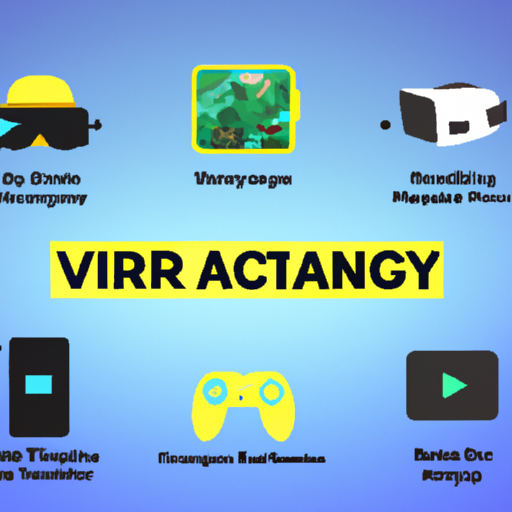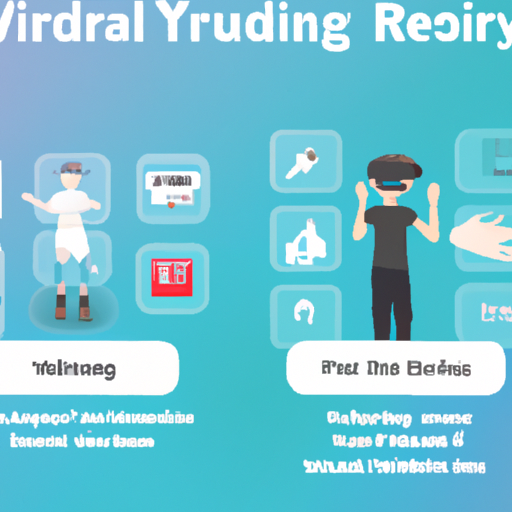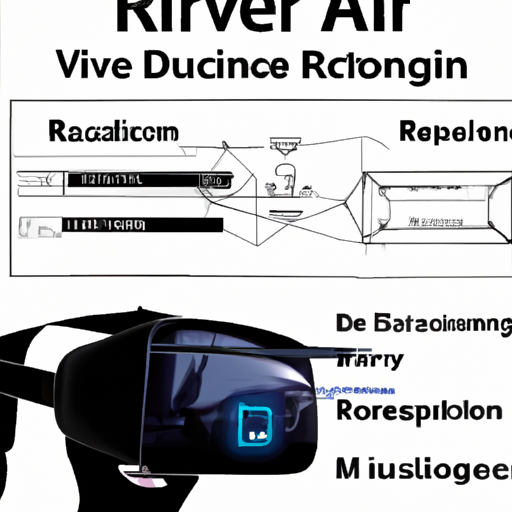-
Table of Contents
- Introduction
- The Business of VR/AR: How Companies are Leveraging Virtual and Augmented Reality to Enhance Their Products and Services
- The Future of Gaming: How Virtual and Augmented Reality are Changing the Way We Play
- The Impact of VR/AR on Healthcare: How Virtual and Augmented Reality are Revolutionizing Patient Care
- Exploring the Benefits of VR/AR in Education: How Virtual and Augmented Reality are Transforming the Classroom
- Conclusion
“Unlock the Possibilities of VR/AR: Transform Your Industry Today!”
Introduction
Virtual Reality (VR) and Augmented Reality (AR) are rapidly becoming the go-to technologies for a variety of industries. From gaming to education to healthcare, these technologies are revolutionizing the way we interact with the world around us. VR and AR applications are being used to create immersive experiences, provide interactive learning opportunities, and even improve patient care. With the potential to revolutionize the way we interact with the world, VR and AR applications are quickly becoming the norm in many industries.
The Business of VR/AR: How Companies are Leveraging Virtual and Augmented Reality to Enhance Their Products and Services
Virtual and Augmented Reality (VR/AR) are rapidly becoming a major part of the business world. Companies are leveraging these technologies to enhance their products and services, creating new opportunities for growth and innovation.
VR/AR technologies allow businesses to create immersive experiences for their customers. For example, retailers can use VR to give customers a virtual tour of their store, allowing them to explore products and services without ever leaving their home. Similarly, AR can be used to provide customers with an interactive experience, such as overlaying product information on top of a physical product.
Businesses are also using VR/AR to improve their internal operations. For example, companies can use VR to train employees in a safe, simulated environment. This can help reduce costs associated with training and minimize the risk of injury. Additionally, AR can be used to provide employees with real-time information and instructions, allowing them to work more efficiently.
Finally, businesses are using VR/AR to create new products and services. For example, companies can use VR to create virtual events, such as concerts or conferences, that can be experienced from anywhere in the world. Similarly, AR can be used to create interactive experiences, such as games or educational tools.
In short, businesses are leveraging VR/AR to enhance their products and services, create new opportunities for growth and innovation, and improve their internal operations. As these technologies continue to evolve, businesses will be able to take advantage of even more opportunities to stay ahead of the competition.
The Future of Gaming: How Virtual and Augmented Reality are Changing the Way We Play
The gaming industry is rapidly evolving, and virtual and augmented reality (VR and AR) are two of the most exciting new technologies that are changing the way we play. VR and AR are both immersive technologies that allow users to interact with virtual environments in a way that is more realistic than ever before.
VR is a fully immersive experience that transports users into a completely virtual world. This technology is used in a variety of gaming applications, from first-person shooters to puzzle games. With VR, users can explore virtual worlds, interact with objects, and even play against other players in a virtual environment.
AR, on the other hand, is a technology that overlays virtual objects onto the real world. This technology is used in a variety of gaming applications, from augmented reality sports games to augmented reality puzzle games. With AR, users can interact with virtual objects in the real world, allowing for a more immersive gaming experience.
Both VR and AR are changing the way we play games. With these technologies, developers are able to create more immersive and realistic gaming experiences than ever before. VR and AR also allow for more social interaction between players, as they can now interact with each other in virtual worlds.
The future of gaming is sure to be exciting, as VR and AR continue to evolve and become more accessible. As these technologies become more widely available, developers will be able to create even more immersive and realistic gaming experiences. In the future, we may even see VR and AR being used in a variety of other applications, such as education and healthcare.
No matter what the future holds, one thing is certain: VR and AR are changing the way we play games, and the possibilities are endless.
The Impact of VR/AR on Healthcare: How Virtual and Augmented Reality are Revolutionizing Patient Care
Virtual reality (VR) and augmented reality (AR) are revolutionizing the healthcare industry, providing innovative solutions to improve patient care. By utilizing these technologies, healthcare providers are able to provide more accurate diagnoses, reduce costs, and improve patient outcomes.
VR and AR are being used in a variety of ways in the healthcare industry. For example, VR can be used to simulate medical procedures, allowing medical students to practice and hone their skills in a safe and controlled environment. AR can be used to provide real-time information to medical professionals, such as patient records, medical images, and drug information.
VR and AR can also be used to improve patient care. For example, VR can be used to provide immersive experiences to patients, such as virtual tours of medical facilities or virtual reality therapy for those suffering from mental health issues. AR can be used to provide real-time information to patients, such as medical images or drug information.
In addition, VR and AR can be used to improve the accuracy of diagnoses. For example, AR can be used to provide real-time information to medical professionals, such as medical images or drug information. This can help medical professionals make more accurate diagnoses and provide better patient care.
Finally, VR and AR can be used to reduce costs. For example, VR can be used to simulate medical procedures, allowing medical students to practice and hone their skills in a safe and controlled environment. This can reduce the need for expensive medical equipment and reduce the cost of medical training.
Overall, VR and AR are revolutionizing the healthcare industry, providing innovative solutions to improve patient care. By utilizing these technologies, healthcare providers are able to provide more accurate diagnoses, reduce costs, and improve patient outcomes.
Exploring the Benefits of VR/AR in Education: How Virtual and Augmented Reality are Transforming the Classroom
The use of virtual and augmented reality (VR/AR) in education is rapidly gaining traction as a powerful tool for teaching and learning. VR/AR technology has the potential to revolutionize the way students learn, providing immersive and interactive experiences that can engage students in ways that traditional methods cannot. This article will explore the potential benefits of VR/AR in education, and how this technology is transforming the classroom.
One of the most significant advantages of VR/AR in education is its ability to create immersive learning experiences. By immersing students in a virtual environment, they can explore and interact with the material in a way that is not possible with traditional methods. For example, students can explore a virtual museum, take a virtual field trip, or even visit a historical site. This type of immersive learning can help students to better understand and retain the material, as well as providing an engaging and enjoyable experience.
Another benefit of VR/AR in education is its ability to provide personalized learning experiences. By using VR/AR technology, teachers can tailor the learning experience to each student’s individual needs and abilities. For example, a teacher can create a virtual environment that is tailored to a student’s learning style, allowing them to explore the material at their own pace and in a way that is most effective for them. This type of personalized learning can help to ensure that each student is able to get the most out of the material.
Finally, VR/AR technology can also be used to create interactive learning experiences. By using VR/AR, teachers can create interactive simulations and games that can help to engage students in the material. For example, a teacher can create a virtual world where students can explore and interact with the material in a way that is both fun and educational. This type of interactive learning can help to keep students engaged and motivated to learn.
In conclusion, VR/AR technology has the potential to revolutionize the way students learn, providing immersive and interactive experiences that can engage students in ways that traditional methods cannot. By creating immersive learning experiences, providing personalized learning experiences, and creating interactive learning experiences, VR/AR technology can help to ensure that each student is able to get the most out of the material. As such, VR/AR technology is transforming the classroom and providing students with an engaging and enjoyable learning experience.
Conclusion
In conclusion, VR/AR applications have the potential to revolutionize many industries, from gaming to healthcare. They offer a unique way to interact with the world around us, allowing us to experience things in a more immersive and engaging way. With the right implementation, these technologies can be used to create more efficient and effective solutions for a variety of industries. As the technology continues to evolve, we can expect to see more innovative applications of VR/AR in the future.





